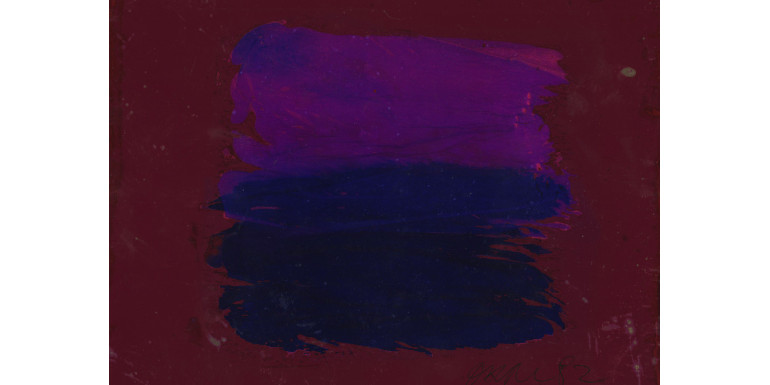Ferrari, León
He was born in Buenos Aires in 1920. A self-taught and multifaceted artist, he created works in the most diverse materials, from plaster to cement, wood, and wire, later working with photocopies, heliography, paper collages, and videotexts. He always expressed his interest in language, which can be seen in his calligraphic works, "abstract writings" that marked his career. In 1954, he traveled to Italy. In 1995, he held his first solo exhibition in Milan. In the mid-1960s, he met Rafael Alberti, a meeting that gave rise to this book. In 1965, he presented one of his most controversial creations to the Di Tella Prize: "Western Civilization and Christianity," a work that denounces the relationship between religion, politics, and violence in Western culture. He later returned to Buenos Aires until 1976 when, following the outbreak of the military dictatorship, he went into exile in São Paulo. There, he continued his language experiments by creating a new alphabet and vocabulary based on images. In 1982, upon the restoration of democracy, Ferrari returned to Argentina for the first time. In April of the same year, he exhibited heliographs and photocopies at the Carrillo Gil Museum in Mexico City. In March 1983, he exhibited plans, heliographs, photocopies, and a couple of metal sculptures at Casa de las Américas in Havana, where he decided to donate the metal sculpture "The Girl" to Fidel Castro. Between April and May 1984, after eight years of absence, he exhibited his work in Buenos Aires, participating in the collective exhibitions "Artists on Paper" and "Artist Books" at the Cultural Center of Buenos Aires City (later renamed Recoleta Cultural Center). From there, he continued his open confrontations against forms of political, media, and religious power, through expression throughout his entire body of work. In 1987, he exhibited the installation "Heretical Chapel" at the Franklin Furnace in New York, a display of collages from the series reinterpreting the Bible. In 1995, he received the Guggenheim Fellowship. In 1996, he participated in the exhibition "Echo: The Last Word," with the text "Beginning and End of Ecology," in which he pointed out the paths taken by this branch of science in the Holy Scriptures. In 1997, he received the Grand Prize at the Third Salon of Mar del Plata with the work "Evening That Undermined Our Love," a poem by Borges written in Braille on a photo by Man Ray. In May 2000, he presented "Hells and Idolatries" at the Ibero-American Cooperation Institute - Cultural Center of Spain in Buenos Aires, an exhibition that was subjected to attacks and accusations by religious associations. In 2004, the Recoleta Cultural Center exhibited a retrospective of the author, containing the two most representative themes of his work: the abstract and the poetic on the one hand, and on the other hand, his confrontation with power and the church. Five years later, this exhibition was taken to the Museum of Modern Art (MoMA) in New York. In 2007, Ferrari was distinguished as the best artist of the 52nd edition of the Venice Biennale, increasing his international recognition. Currently, his openly critical and challenging work constitutes an important artistic background within the most important museums worldwide.
Actividades relacionadas

Dangerous Abstractions. A meeting in the hall led by Rodrigo Alonso
Jiménez, Agustín / Rebolledo, Santiago / Jaramillo, Beatriz / Le Parc, Julio / Trejo Zúñiga, Víctor / Franco, Fernell / Makarius, Sameer / Calle, Johanna / Roiger, Jorge / Heredia, Jorge / Ferrari, León / De Zuviría, Facundo / Martínez, Raúl / López Luz, Pablo / Hare, Billy / Robledo, Victor / Ostera, Andrea / de Barros, Geraldo / Yalenti, José / Consuegra, David / Aguerre, Rómulo R. / Salas Portugal, Armando / Ortiz, Jorge / Blanco, Lázaro / Travnik, Juan / Chambi, Martín / Cristián Silva-Avária